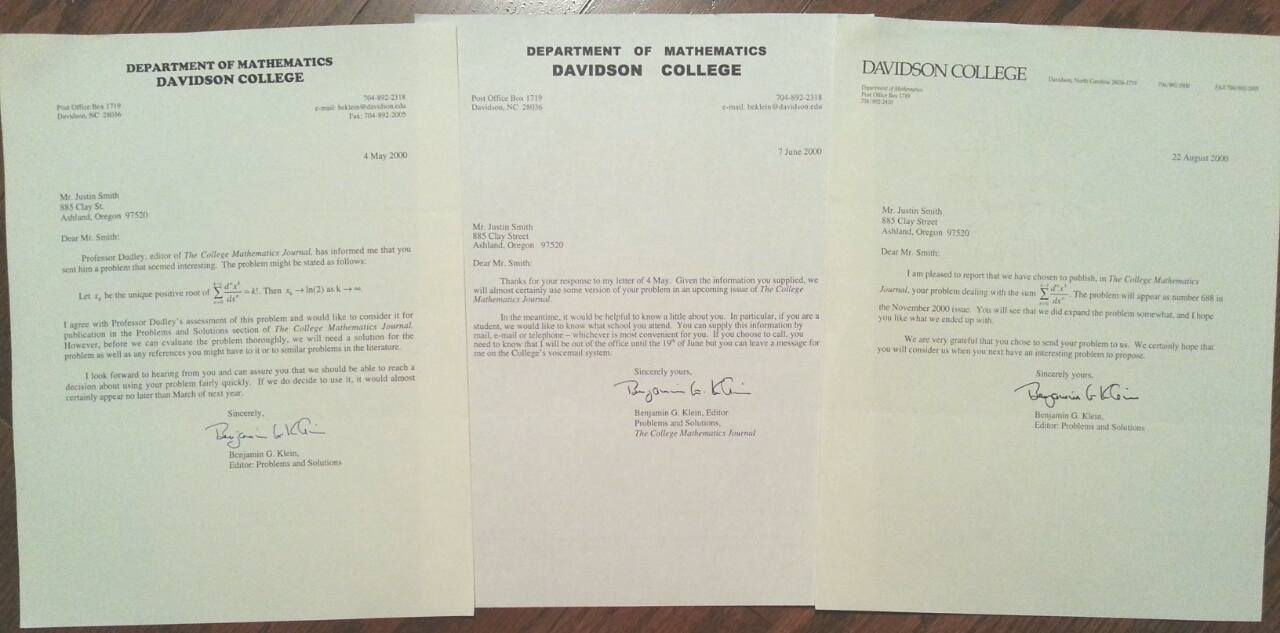The College Mathematics Journal, Vol. 31, No. 5, Nov. 2000, problem 688, p. 409
11/2000
Let an, n>=1 denote a sequence of positive real numbers, and for each n>=1, define rn to be the unique positive solution to the equation

Given a nonnegative number L, characterize those sequences an
such that lim n-->oo an = L.
Hint:
I created the following problem while I was playing around with some graphs. Consider graphing the following equations:
- y = x2 + 2x, y = 2
- y = x3 + 3x2 + 6x, y = 6
- y = x4 + 4x3 + 12x2 + 24x, y = 24
- y = x5 + 5x4 + 20x3 + 60x2 + 120x, y = 120
Notice that the x value of the intersection for each pair of equations decreases. However, if the process were continued, we know the x value of the intersection would not be 0, because we'd have
0 = really large number
which is not possible. Therefore the x value must be greater than 0, but what x value is it?
Here is the correspondence I have on the problem:

Please anonymously VOTE on the content you have just read:
Like:Dislike: